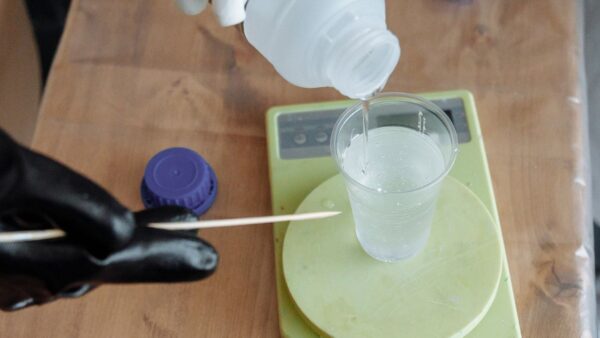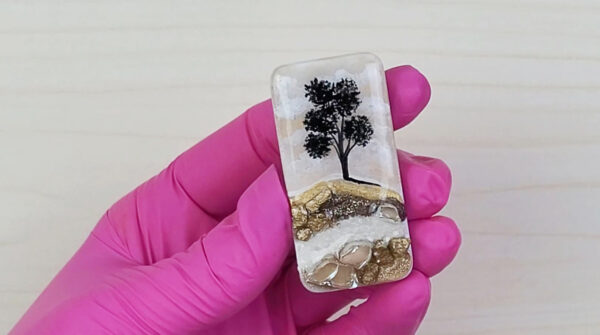How to dispose of resin: 15 tips
Welcome to our resin blog. So you are wondering how to dispose epoxy resin. Proper disposal of resin is important for both safety and environmental responsibility in crafting projects.
Whether you’re working with epoxy, polyester, or other resin types, managing your waste ensures a clean workspace and minimizes impact on the environment. These tips will help you with your resin waste for your epoxy resin business or crafting.
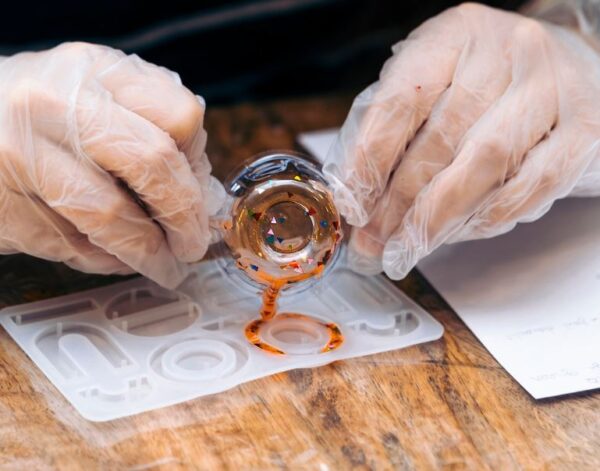
This guide outlines tips for disposing of both cured and uncured resin, while emphasizing compliance with local regulations and best practices.
By following these guidelines, crafters can contribute to sustainable crafting practices and protect their health and surroundings.
how to properly dispose resin
1. first check Local Guidelines:
Consult local environmental regulations and waste management guidelines for specific resin disposal requirements in your area.
You can call your city hall and see if they can give you a phone number of the right people to call.
Municipalities may impose regulations governing the handling, storage, and disposal of resin waste to protect public health and the environment.

Familiarizing yourself with local guidelines ensures compliance and facilitates responsible disposal practices.
Crafters should stay informed about any updates or changes to resin waste disposal regulations to uphold environmental stewardship and avoid potential penalties.
2. Cured Resin disposal:
Mistakes are often made with resin and you might have extra resin pieces laying around. You might have had a problem with bubbles forming in resin and need to throw your ruined pieces out.
Dispose of cured resin by treating it as solid waste in accordance with local waste disposal guidelines.
Once resin has fully cured and hardened, it is generally considered safe for disposal in regular trash bins.
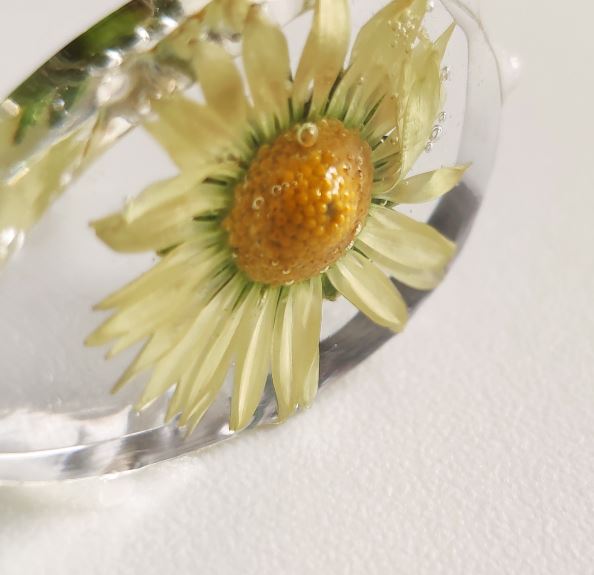
Always check your local regulations, as some areas may have specific rules regarding the disposal of solidified resin waste to protect the environment and sanitation workers.
3. disposing Uncured Resin:
Manage uncured resin by using a dedicated resin disposal container. This container should be lined with a plastic bag or other liner to facilitate easy removal and disposal of resin scraps and spills.
Promptly place any uncured resin waste, such as drips, overflow, or expired mixtures, into this container to prevent it from spreading or contaminating other surfaces.

By containing uncured resin in a designated disposal area, crafters can minimize environmental impact and safely handle resin waste.
Check your local regulations on where to take the uncured resin. It might be at your local fire department or at your landfill.
4. Scrap Collection of cured resin:
Securely collect cured resin scraps and trimmings in a sealable container to prevent spills and facilitate safe disposal.
After completing resin projects, gather any leftover resin pieces, offcuts, or unused portions and place them in a your container.
If you make small items like jewelry, you can use leftover food containers for this.

By having a place to store resin scraps, crafters can maintain a tidy workspace and manage resin waste responsibly.
5. Do not put resin down a drain:
Never dispose of liquid resin or resin remnants down sinks or drains to prevent environmental contamination and plumbing issues. Liquid resin can harden and clog pipes, leading to costly repairs and environmental hazards.
Always dispose of liquid resin waste in designated containers for solidification and subsequent disposal.
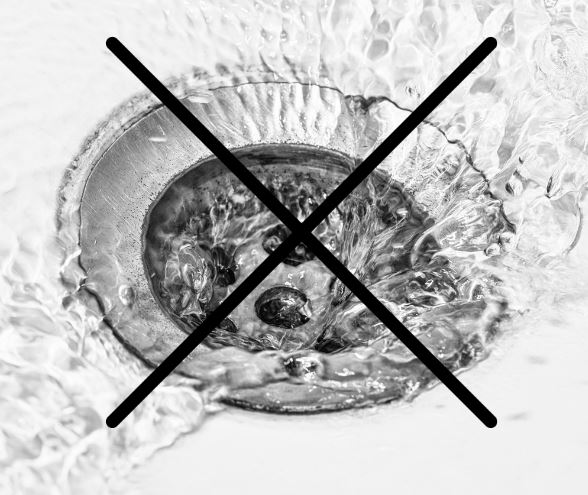
By avoiding drain disposal, crafters protect water quality and ensure compliance with environmental regulations governing hazardous waste handling.
6. proper Resin Removal:
Scrape cured resin remnants from mixing containers and work surfaces for proper disposal, minimizing waste accumulation.
After resin projects, use a spatula or similar tool to remove cured resin residues adhering to containers, tools, or work areas.
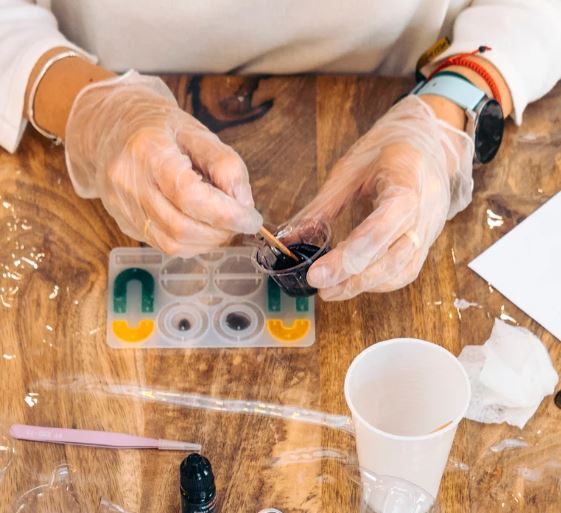
Transfer collected resin scraps to a designated waste disposal container for secure containment and eventual disposal.
Thoroughly cleaning resin residues from surfaces helps maintain a clean workspace and supports efficient resin waste management practices. See our articles about how to get uncured resin out of molds properly. And how to clean silicone mixing cups.
7. Solidification of epoxy resin:
If possible, allow liquid resin waste to solidify before disposal so you can transport it without it getting everywhere.
Use a suitable container lined with a plastic bag or liner to collect liquid resin spills or leftover mixtures.
Once resin solidifies into a manageable form, seal the container securely and label it for proper identification.
8. Double Bagging resin containers:
Double-bag uncured resin waste in sturdy plastic bags to help prevent leaks or spills.
Securely sealing resin waste in multiple layers of plastic bags provides added protection against sticky spills.
Double-bagging also helps stop leaks during transport to your landfill or recycle place.
9. Labeling resin containers:
Clearly label containers used for resin waste disposal with appropriate identification, such as “Resin Waste”. Labeling helps so resin waste is handled correctly by waste management personnel and facilities.
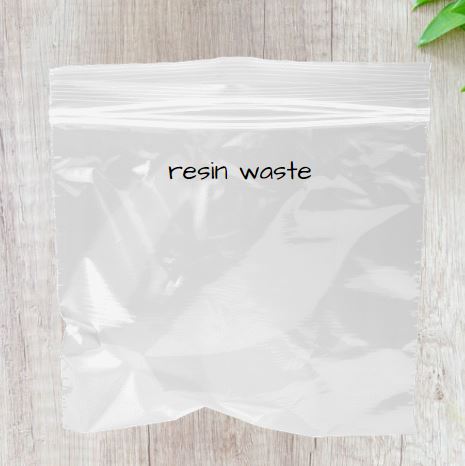
Properly labeled containers streamline waste management processes and facilitate compliance with regulatory requirements governing resin waste disposal.
Crafters should prioritize clear and concise labeling practices to support safe and efficient waste handling procedures.
10. Professional epoxy resin Disposal:
Consider professional disposal services for large quantities of resin waste or when unsure about local disposal regulations.
Professional waste management companies specialize in handling hazardous or industrial waste, including resin materials.
Professional disposal providers possess the expertise and resources to manage resin waste safely, minimizing environmental impact and promoting sustainable waste management practices.
11. Recycle options for resin:
Can you recycle resin? Sometimes, it will depend on your local guidelines. Call your city hall to find out who to call for resin recycling for leftover resin. They should be able to tell you who to contact about reuse opportunities.
Some recycling facilities accept certain types of cured resin for repurposing into new products or materials. Investigate local recycling programs or facilities that accept resin materials to support circular economy initiatives.
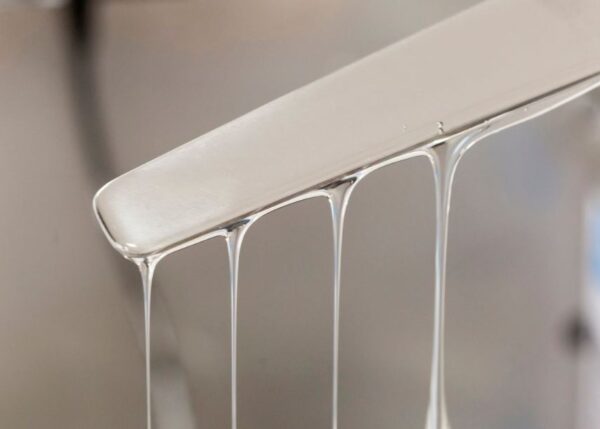
By actively seeking reuse options for cured and uncured epoxy resin waste, crafters contribute to resource conservation and sustainability efforts.
Reuse opportunities offer an environmentally friendly alternative to traditional disposal methods, promoting responsible resin waste management practices.
These detailed tips aim to help crafters dispose of resin responsibly while adhering to safety protocols and environmental considerations.
12. Reusable tools for resin:
Utilize reusable tools such mixing sticks and containers to simplify resin cleanup and minimize waste generation. Reusable silicone supplies eliminate resin waste. Check out our article about the best reusable silicone molds for resin.
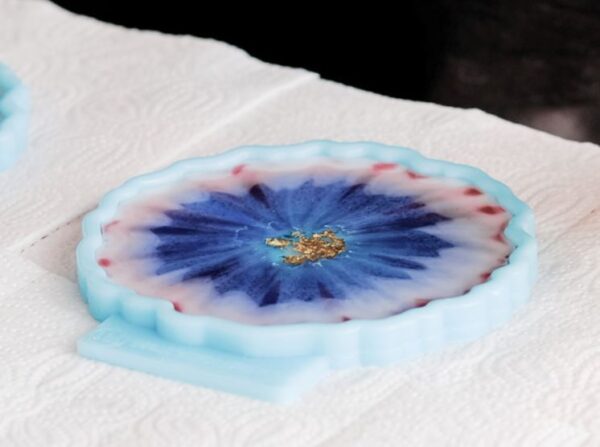
13. calculate how much resin you need:
Avoid mixing excessive quantities of resin that could lead to unnecessary waste. Calculate resin amounts needed for specific projects to minimize leftover mixtures.

By accurately measuring resin and curing agents according to project requirements, crafters can reduce the likelihood of surplus resin that may require disposal.
Using precise resin mixing practices not only conserves materials but also streamlines cleanup and waste management efforts.
14. using resin properly:
Follow manufacturer instructions carefully when using curing agents to ensure resin hardens completely.
Proper curing is important not only for achieving desired resin properties but also for facilitating safe disposal.

Using the correct ratio of resin to curing agent and allowing sufficient curing time helps minimize leftover uncured resin waste.
By adhering to recommended curing practices, crafters can optimize resin usage and reduce waste disposal challenges.
15. Ventilation:
Work in a well-ventilated area whenever handling resin to minimize exposure to fumes and ensure personal safety.
Adequate ventilation helps disperse volatile organic compounds (VOCs) emitted during resin mixing and curing processes.
See our guides: Is epoxy resin toxic & proper ppe to use for resin.
Positioning workspaces near open windows, using exhaust fans, or working outdoors can significantly reduce respiratory irritation and the risk of inhaling harmful fumes.
Prioritizing ventilation safeguards the health of crafters and promotes a safer resin handling environment.
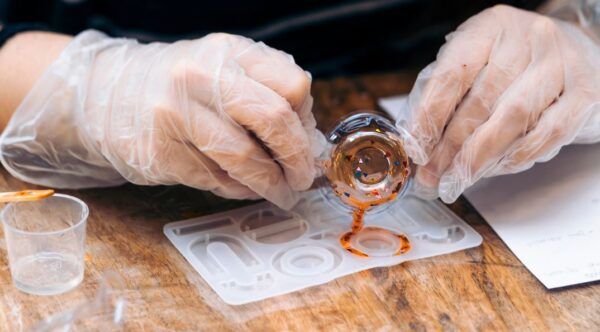
In conclusion, responsible resin disposal involves careful planning, adherence to safety guidelines, and awareness of environmental impact.
By following the tips outlined in this article—such as proper solidification, using dedicated disposal containers, and consulting local regulations—crafters can manage resin waste effectively.
By making these practices your resin crafting routine, you not only enhance workspace hygiene but also support proper waste management practices in the crafting community.




